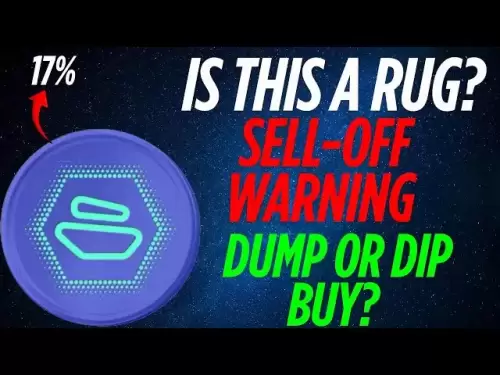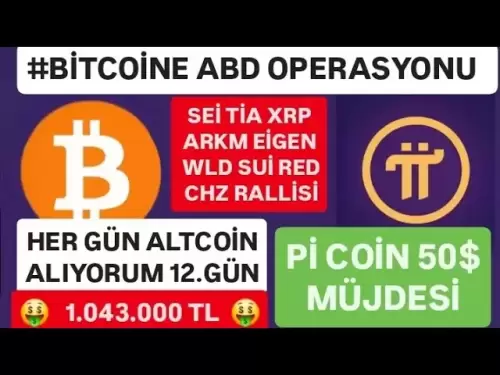-
 Bitcoin
Bitcoin $108,708.8110
0.60% -
 Ethereum
Ethereum $2,561.6057
1.91% -
 Tether USDt
Tether USDt $1.0001
-0.03% -
 XRP
XRP $2.2795
0.57% -
 BNB
BNB $662.2393
1.00% -
 Solana
Solana $153.1346
3.74% -
 USDC
USDC $1.0000
0.00% -
 TRON
TRON $0.2877
0.97% -
 Dogecoin
Dogecoin $0.1710
3.93% -
 Cardano
Cardano $0.5871
1.61% -
 Hyperliquid
Hyperliquid $39.6663
1.68% -
 Sui
Sui $2.9032
0.79% -
 Bitcoin Cash
Bitcoin Cash $496.1879
1.71% -
 Chainlink
Chainlink $13.5807
3.01% -
 UNUS SED LEO
UNUS SED LEO $9.0777
0.61% -
 Stellar
Stellar $0.2514
4.51% -
 Avalanche
Avalanche $18.1761
1.86% -
 Shiba Inu
Shiba Inu $0.0...01173
1.72% -
 Toncoin
Toncoin $2.8010
-4.23% -
 Hedera
Hedera $0.1594
3.21% -
 Litecoin
Litecoin $87.0257
-0.53% -
 Monero
Monero $319.1217
1.79% -
 Polkadot
Polkadot $3.3853
0.68% -
 Dai
Dai $0.9999
-0.01% -
 Ethena USDe
Ethena USDe $1.0003
0.02% -
 Bitget Token
Bitget Token $4.3420
-0.97% -
 Uniswap
Uniswap $7.3772
1.39% -
 Aave
Aave $286.6277
5.61% -
 Pepe
Pepe $0.0...09994
2.33% -
 Pi
Pi $0.4589
1.76%
What are the account API restrictions of Kraken?
Kraken's API has rate limits (1 req/sec for public, 15 req/min for private), access limits based on verification levels, and security measures like API key permissions and nonce requirements.
Apr 23, 2025 at 11:35 pm

Kraken is one of the leading cryptocurrency exchanges, known for its robust security measures and wide range of trading options. One of the critical aspects for users, especially those who are interested in integrating their trading strategies with automated systems, is understanding the account API restrictions imposed by Kraken. These restrictions are in place to ensure the security and integrity of the platform and its users' funds. In this article, we will delve into the specifics of Kraken's account API restrictions, helping you understand what limitations you might encounter and how to navigate them effectively.
Types of Kraken API Restrictions
Kraken offers a range of API endpoints that allow users to interact with the exchange programmatically. However, there are several restrictions in place to protect users and the platform. These restrictions can be broadly categorized into rate limits, access limits, and security measures.
Rate Limits: Kraken imposes rate limits on the number of API requests that can be made within a specific time frame. This is to prevent abuse and ensure fair access to the platform for all users. For example, the public API has a rate limit of 1 request per second, while the private API has a limit of 15 requests per minute.
Access Limits: Certain API endpoints may require higher levels of account verification. For instance, access to withdrawal APIs might be restricted to accounts that have completed advanced verification.
Security Measures: Kraken employs various security measures such as API key permissions and nonce requirements to ensure that only authorized users can access sensitive operations.
Understanding Rate Limits
Rate limits are a crucial aspect of Kraken's API restrictions. These limits are designed to prevent any single user from overwhelming the system with too many requests, which could lead to degraded performance for other users.
Public API Rate Limits: The public API, which includes endpoints for market data, has a rate limit of 1 request per second. This means you can make up to 60 requests per minute.
Private API Rate Limits: The private API, which includes endpoints for trading and account management, has a more stringent limit of 15 requests per minute. This is to protect sensitive user data and prevent potential abuse.
Navigating Access Limits
Access limits are another important facet of Kraken's API restrictions. These limits ensure that only users with the appropriate level of verification can access certain functionalities.
Basic Verification: Accounts with basic verification can access most public API endpoints and some private API endpoints. However, they may not have access to withdrawal APIs or other high-risk operations.
Intermediate Verification: Accounts with intermediate verification gain access to more private API endpoints, including withdrawal APIs. However, there may still be limits on the amount that can be withdrawn.
Advanced Verification: Accounts with advanced verification have the highest level of access to the API. They can use all available endpoints, including those for high-value transactions and advanced trading features.
Implementing Security Measures
Security is paramount when dealing with APIs, especially those related to financial transactions. Kraken implements several security measures to ensure that only authorized users can access sensitive operations.
API Key Permissions: When you create an API key on Kraken, you can set specific permissions for that key. For example, you can create a key that only has permission to read data but not to execute trades or withdrawals. This helps in limiting the potential damage if the key is compromised.
Nonce Requirement: Kraken's private API endpoints require a nonce, which is a unique number that must be higher than the last nonce used with the same API key. This prevents replay attacks, where an attacker could reuse a valid request.
IP Whitelisting: You can also whitelist specific IP addresses for your API keys, adding an extra layer of security by ensuring that requests can only come from trusted sources.
Best Practices for Working with Kraken's API
To effectively work within the constraints of Kraken's API restrictions, it's important to follow best practices that can help you maximize your usage while staying within the limits.
Implement Rate Limiting in Your Code: To avoid hitting Kraken's rate limits, you should implement rate limiting in your own code. This can be done using libraries that manage API requests and ensure they stay within the allowed limits.
Use Appropriate API Keys: Make sure you use the correct API keys for the operations you are performing. Use keys with limited permissions for less sensitive operations to minimize risk.
Monitor Your API Usage: Keep an eye on your API usage to ensure you are not approaching the limits. Kraken provides tools to monitor your API usage, which can be invaluable for managing your requests.
Secure Your API Keys: Always store your API keys securely and never share them. Use environment variables or secure storage solutions to keep your keys safe.
Common Scenarios and Solutions
Understanding how to handle common scenarios when working with Kraken's API can help you navigate the restrictions more effectively.
Scenario: Hitting Rate Limits: If you find that your application is hitting rate limits, you can implement a retry mechanism with exponential backoff. This means that if a request fails due to rate limits, your application will wait for a short period before retrying, and this period will increase with each subsequent failure.
Scenario: Needing Higher Access Limits: If you need access to endpoints that require higher levels of verification, you will need to upgrade your account verification level. This process involves providing more documentation to Kraken, which can take some time.
Scenario: API Key Compromise: If you suspect that your API key has been compromised, you should immediately revoke the key and generate a new one. Make sure to update your application to use the new key.
Frequently Asked Questions
Q1: Can I increase my API rate limits on Kraken?
A1: Kraken's API rate limits are set to ensure fair access for all users and cannot be increased. However, you can manage your API usage more efficiently by implementing rate limiting in your own code.
Q2: What should I do if I need to access withdrawal APIs but my account is not verified enough?
A2: To access withdrawal APIs, you need to upgrade your account to at least the intermediate verification level. This involves submitting additional documentation to Kraken for verification.
Q3: How can I secure my API keys on Kraken?
A3: To secure your API keys, use keys with limited permissions for less sensitive operations, store your keys securely using environment variables or secure storage solutions, and consider implementing IP whitelisting for an additional layer of security.
Q4: What happens if my API key is compromised?
A4: If your API key is compromised, you should immediately revoke the key and generate a new one. Update your application to use the new key and review your security practices to prevent future compromises.
Disclaimer:info@kdj.com
The information provided is not trading advice. kdj.com does not assume any responsibility for any investments made based on the information provided in this article. Cryptocurrencies are highly volatile and it is highly recommended that you invest with caution after thorough research!
If you believe that the content used on this website infringes your copyright, please contact us immediately (info@kdj.com) and we will delete it promptly.
- BNB's Bullish Breakout: Riding the $600 Support Level Wave
- 2025-07-08 04:55:13
- Internet Computer, Live Stream, YouTube: What's the Buzz?
- 2025-07-08 04:30:12
- LILPEPE, Bitcoin, 2013: Meme Coin Mania or the Next Big Thing?
- 2025-07-08 04:30:12
- E-Load Super Blast: Sri Lanka's Prize Bonanza!
- 2025-07-08 02:30:13
- Pepe, Blockchain, and Presales: What's the Hype?
- 2025-07-08 03:50:17
- Crypto VC, DeFi Liquidity, and Kuru Labs: What's the Buzz?
- 2025-07-08 02:50:12
Related knowledge

How to recover a lost Binance account
Jul 07,2025 at 09:07pm
What Happens When a Binance Account Is Lost?Losing access to your Binance account can be a distressing experience, especially if you hold significant digital assets. This typically occurs due to forgotten login credentials, loss of two-factor authentication (2FA) devices, or compromised accounts. Understanding the exact reason behind losing access is cr...
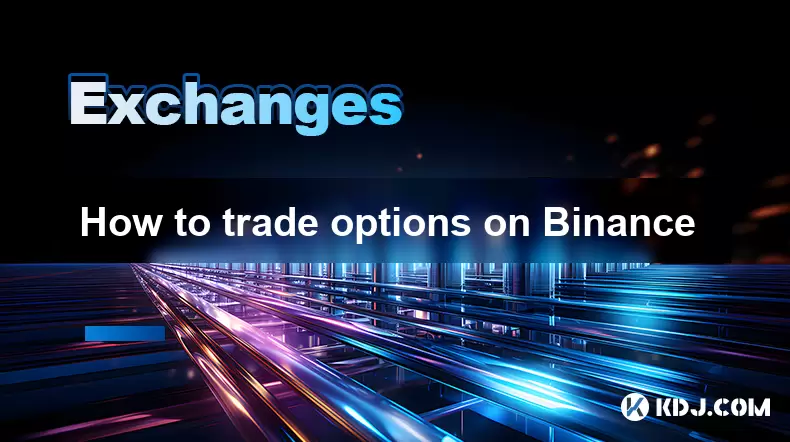
How to trade options on Binance
Jul 08,2025 at 04:35am
Understanding Options Trading on BinanceOptions trading allows investors to speculate on the future price of an asset without owning it. On Binance, users can trade crypto options, which are derivative contracts that give traders the right—but not the obligation—to buy or sell a cryptocurrency at a predetermined price before a specific date. This form o...

How to read Binance charts
Jul 07,2025 at 08:14pm
Understanding the Basics of Binance ChartsReading Binance charts effectively is essential for making informed trading decisions in the cryptocurrency market. Before diving into technical indicators and candlestick patterns, it's important to understand the basic layout of a chart on the Binance platform. The default chart interface displays price moveme...
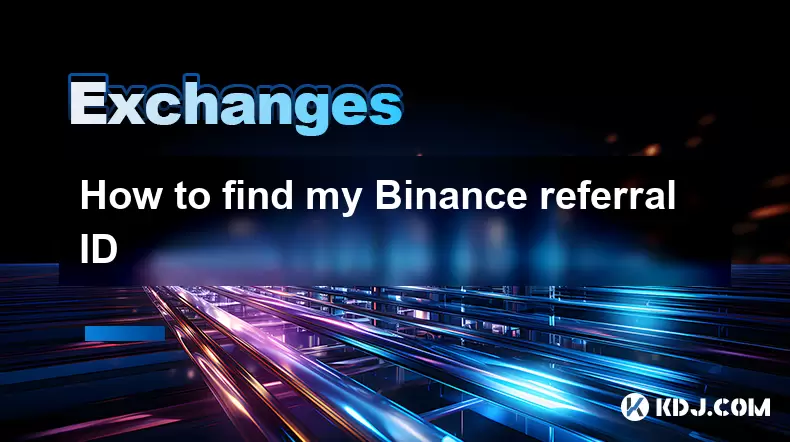
How to find my Binance referral ID
Jul 07,2025 at 06:29pm
What is a Binance Referral ID?A Binance Referral ID is a unique identifier assigned to each user on the Binance platform. This ID allows users to refer new traders to Binance and earn commissions from their trading fees. The referral program is an integral part of Binance’s ecosystem, encouraging community growth and rewarding active participants. Every...

Binance verification rejected why
Jul 07,2025 at 06:57pm
Understanding Binance Verification RejectionIf your Binance verification was rejected, you're likely searching for answers on why this happened and how to resolve it. Binance, as one of the world's largest cryptocurrency exchanges, requires users to complete identity verification to comply with Know Your Customer (KYC) regulations. When a verification r...
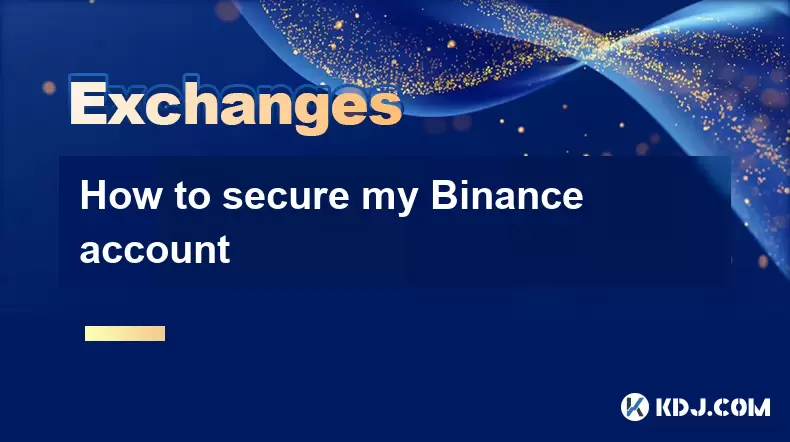
How to secure my Binance account
Jul 08,2025 at 02:15am
Enable Two-Factor Authentication (2FA)Securing your Binance account starts with enabling Two-Factor Authentication (2FA), which adds an extra layer of security beyond just your password. The most secure method is using an authentication app like Google Authenticator or Authy. To set this up, navigate to your Binance profile settings and select the Secur...

How to recover a lost Binance account
Jul 07,2025 at 09:07pm
What Happens When a Binance Account Is Lost?Losing access to your Binance account can be a distressing experience, especially if you hold significant digital assets. This typically occurs due to forgotten login credentials, loss of two-factor authentication (2FA) devices, or compromised accounts. Understanding the exact reason behind losing access is cr...

How to trade options on Binance
Jul 08,2025 at 04:35am
Understanding Options Trading on BinanceOptions trading allows investors to speculate on the future price of an asset without owning it. On Binance, users can trade crypto options, which are derivative contracts that give traders the right—but not the obligation—to buy or sell a cryptocurrency at a predetermined price before a specific date. This form o...

How to read Binance charts
Jul 07,2025 at 08:14pm
Understanding the Basics of Binance ChartsReading Binance charts effectively is essential for making informed trading decisions in the cryptocurrency market. Before diving into technical indicators and candlestick patterns, it's important to understand the basic layout of a chart on the Binance platform. The default chart interface displays price moveme...

How to find my Binance referral ID
Jul 07,2025 at 06:29pm
What is a Binance Referral ID?A Binance Referral ID is a unique identifier assigned to each user on the Binance platform. This ID allows users to refer new traders to Binance and earn commissions from their trading fees. The referral program is an integral part of Binance’s ecosystem, encouraging community growth and rewarding active participants. Every...

Binance verification rejected why
Jul 07,2025 at 06:57pm
Understanding Binance Verification RejectionIf your Binance verification was rejected, you're likely searching for answers on why this happened and how to resolve it. Binance, as one of the world's largest cryptocurrency exchanges, requires users to complete identity verification to comply with Know Your Customer (KYC) regulations. When a verification r...

How to secure my Binance account
Jul 08,2025 at 02:15am
Enable Two-Factor Authentication (2FA)Securing your Binance account starts with enabling Two-Factor Authentication (2FA), which adds an extra layer of security beyond just your password. The most secure method is using an authentication app like Google Authenticator or Authy. To set this up, navigate to your Binance profile settings and select the Secur...
See all articles

























